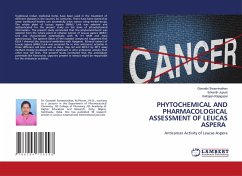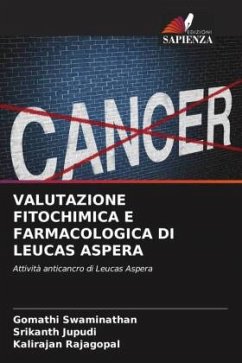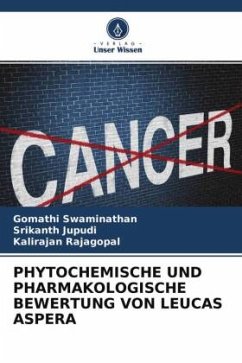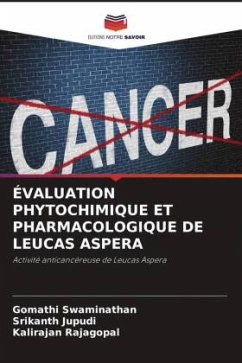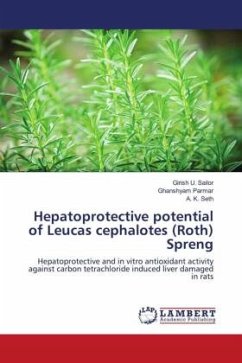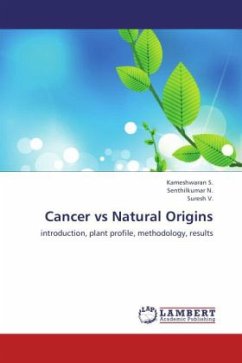
Pharmacological Potential Vs Leucas Aspera
Introduction, Plant profile, Methodology, Results
Versandkostenfrei!
Versandfertig in 6-10 Tagen
39,99 €
inkl. MwSt.

PAYBACK Punkte
20 °P sammeln!
Hepatotoxicity implies chemical-driven liver damage.The liver plays a central role in transforming and clearing chemicals and is susceptible to the toxicity from these agents. Chemicals that cause liver injury are called hepatotoxins. Lead is a cumulative posion and it affects every organ and system in the body. The effects of lead on haeme synthesis may affect the functional capacity of hepatic cytochrome P450 enzymes to metaboise drugs. The biochemical basis for lead toxicity is its ability to bind the biologically important molecules, thereby interfering with their functions. In view of sev...
Hepatotoxicity implies chemical-driven liver damage.The liver plays a central role in transforming and clearing chemicals and is susceptible to the toxicity from these agents. Chemicals that cause liver injury are called hepatotoxins. Lead is a cumulative posion and it affects every organ and system in the body. The effects of lead on haeme synthesis may affect the functional capacity of hepatic cytochrome P450 enzymes to metaboise drugs. The biochemical basis for lead toxicity is its ability to bind the biologically important molecules, thereby interfering with their functions. In view of severe undesirable side effects of synthetic agents, there is a growing focus to follow systematic research methodology and to evaluate scientific basis for the traditional herbal medicines that are claimed to possess hepatoprotective activity. Plants of genus Leucas has been widely employed by the traditional healers to cure many diseases like diabetes, liver disorders, arthritis & anti-inflammatory conditions which insinuated this genus have immense potential for the discovery or new drugs or lead molecules.



